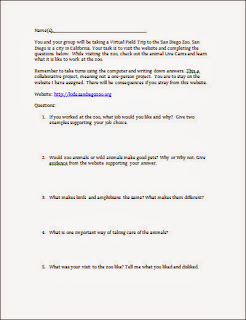Integrating Technology with Ebooks
My school uses the Being a Writer™ program, which includes the writing process as students learn to write. One simple way of including technology is publishing student work through an eBook. After completing a unit in Being a Writer, students have written a story that’s ready to be published. I ask my students to pick out a piece they would like to make into an eBook. You can use PowerPoint to create an eBook. Here are the steps:
- Simply have the students create a slide for each section of their story (beginning, middle, and end, or chapters).
- Don’t forget a Title Page slide.
- Once the students have typed their story, show them how to import clip art or pictures from a file to help enhance their story.
Another way to integrate technology with literacy is to create a virtual field trip to meet the Common Core Standard of asking and answering questions. A virtual field trip is a way to have students explore one or more designated websites while purposefully reading for information. As a teacher you will need to set a purpose (for example, visit Sea World to learn about ocean life) for your virtual field trip as well as a list of questions based on what you want the students to visit. I use open-ended questions to check for understanding rather than short, one-word answers. I create questions according to my students’ abilities.
You can see an example of a virtual field trip form by clicking on the image on the right. The virtual field trip my students love is a trip to San Diego Zoo. They have live webcams and a kid section including audio for non-readers as well as games. This form is a Word document that you can customize with your own questions.
Some of you might ask how I manage a virtual field trip in my classroom. I have students in pairs or small groups to work on answering questions. Every day, a few groups of students use the computers during literacy block time. I have bookmarked the website they are to use and modeled how to use the Internet and the website. With the younger grades, I only have the students use one website with links from that website. For instance, I use kids.sandiegozoo.org, where there are no ads for the kids to accidentally click on and many links to navigate.
Tya Tyrrell is a second-grade teacher in North Carolina. She has been teaching for eleven years and has completed her National Boards Certificate and has a masters degree in elementary education. Additionally, she has Gifted and Intelligence License. Tya also works part time as a consultant with Developmental Studies Center.




No comments:
Post a Comment